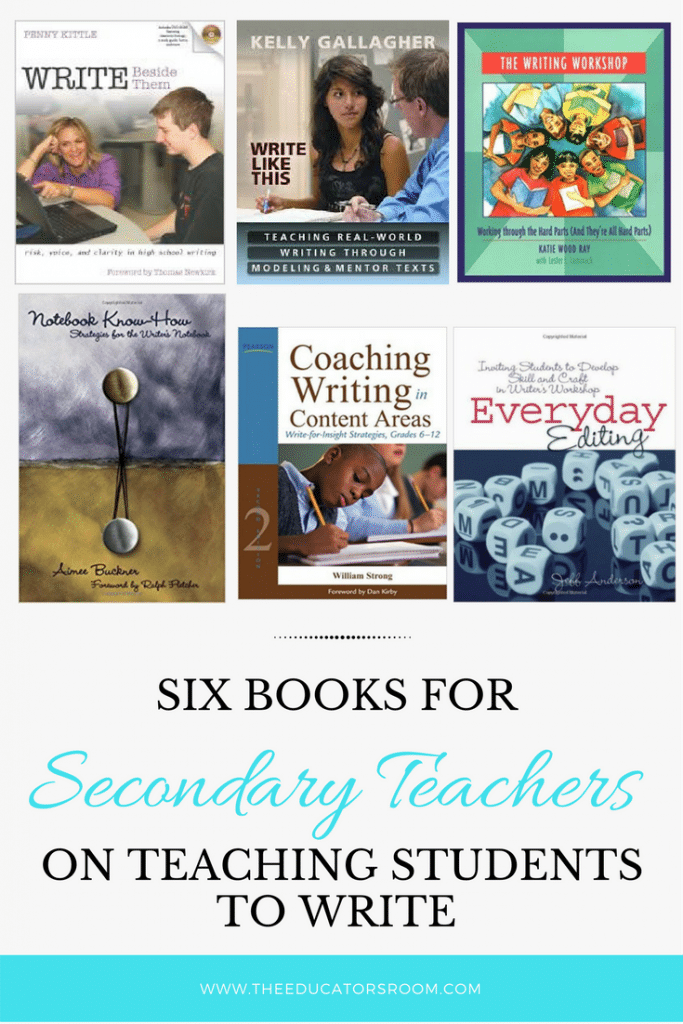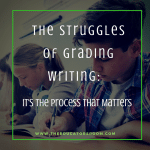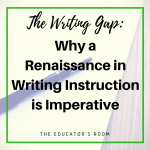Writing across the curriculum is not a new idea. In fact, for over a decade we have seen professional development and training about how to incorporate more writing in more content areas other than ELA. The National Writing Project (NWP) has been a leader in the pursuit of bringing more and better writing instruction to all content areas because the research shows that “writing is central to academic success” (Project & Nagin, 2012, p. 5). We need to be teaching students to write and to write well across all disciplines. It is not just for English class.
I think it can be easy to fall into having students write informative or expository pieces, but writing can do more for students than simply help them inform a fake audience about a non-relevant topic. “The notion of writing as inquiry, problem-solving, and discover has powerful implications for all learning: writing can deepen learning not just in literature class but also in mathematics, science, history, and the arts” (Project & Nagin, 2012, p.25-8). For that reason, I have curated the following lists of books that can help secondary teachers with teaching students to write in all classes.
Write Beside Them: Risk, Voice, and Clarity in High School Writing by Penny Kittle
This is my current favorite book on teaching writing. I am a firm believer that as teachers, we should practice what we teach so I read and write a lot. In her book, Kittle helps teachers incorporate daily writing into the lives of their students while modeling the process and the workshop model. The sections of the book include Daily Writing Practice, Instructional Frameworks, Genre Work, Skills Work, and Assessment. There are online videos that show Kittle in action in her classroom, which is helpful for the visual learner.
Write Like This: Teaching Real-World Writing Through Modeling and Mentor Texts by Kelly Gallagher
Kelly Gallagher is another champion for modeling the writing you want your students to do. In this book he gives practical examples and resources for all types of “real-world” writing from short pieces, to longer work-shopped pieces. The chapters focus on the different purposes for writing that are all part of the Common Core State Standards: Express and Reflect, Inform and Explain, Evaluate and Judge, Inquire and Explore, Analyze and Interpret, and Take a Stand/Propose a Solution. His examples and instruction are not limited to ELA classes.
The Writing Workshop: Writing Through The Hard Parts (And They’re All The Hard Parts) by Katie Ray Wood
I get a lot of non-ELA teachers that say, “Writing Workshop is for English class. I just want my students to write a paper without all that.” I always ask them, “is that how you write a paper? Without the process and in isolation?” That may work for some experienced writers, but not for budding writers. Katie Wood Ray focuses her book’s chapters on the following essentials for a quality Writing Workshop: Choices about content, Time for writing, Teaching, Talking, Periods of focused study, Publication Rituals, High expectations and safety, and Structured management.
Notebook Know-How: Strategies for the Writer’s Notebook by Aimee Buckner
A mantra that repeatedly comes up in research and books about teaching students to write is that it takes practice. Writing is consistently compared to doing anything else well in that it needs to be done often and for extended periods of time. Notebook Know-How is like a handbook on ways to get kids to practice. As a writer myself, I carry a notebook almost everywhere I go. I get ideas from everywhere, but I’ve been at this for a long time. My students are still learning, so this book gives great ways for students to start writing about a variety of things and uses mentor texts and models throughout.
Write for Insight: Empowering Content Area Learning, Grades 6-12 by William Strong
This is probably my favorite cross-curricular book on teaching writing I like to recommend when other content areas ask me for resources. Not only does it give advice for using different purposes of writing in different content areas (argumentative, informative, narrative, etc.), but it gives same activities as well: creating propaganda in history class, healthy meal proposals for health class, a letter to the principal about starting an ultimate frisbee intramural team, website design proposals, and lots more.
Mechanically Inclined: Building Grammar, Usage, and Style into Writer’s Workshop by Jeff Anderson
Grammar and mechanics are best taught with writing, not separate from it. Jeff Anderson is a rock star when it comes to weaving grammar, mechanics, usage and style not just into a writing workshop, but into reading as well. This book has lead to many anchor charts that hang in my room and lots of interactive activities during the reading workshop as well as a writing workshop. He incorporates mentor texts and lots of playing with words and writing.
Students need to be writing in every content area every day. This doesn’t mean they need to be constantly writing essays, but they should be doing a range of writing that can jog discussion or show critical thinking. Hopefully, these six books can help jump start more writing in your class.
For books on teaching writing, check out my post about Six Books for Secondary Teachers for Teaching Students to Read.
*************
Bibliography
Anderson, J. (2005). Mechanically Inclined: building grammar, usage, and style into writer’s workshop. Portland, ME: Stenhouse.
Buckner, A. E. (2005). Notebook know-how: strategies for the writer’s notebook. Portland, Me.: Stenhouse.
Gallagher, K. (2011). Write like this: teaching real-world writing through modeling & mentor texts. Portland, Me: Stenhouse.
Kittle, P. (2008). Write beside them: risk, voice, and clarity in high school writing. Portsmouth, NH: Heinemann.
Project, N. W., & Nagin, C. (2012). Because Writing Matters Improving Student Writing in Our Schools. New York: Wiley.
Ray, K. W., & Laminack, L. L. (2001). The Writing workshop: working through the hards parts (and they’re all hard parts). Urbana, IL: National Council of Teachers.
Strong, W. (2006). Write for insight: empowering content area learning, grades 6-12. Boston, MA: Pearson Allyn and Bacon.







I need some help. I have just been assigned to teach writing 1 and 2 at the high school where I teach. It is a new elective class. It should be fun and informative. I do not know where to begin. I would like to find short stories that might lead to a writing assignment.I would also like to learn how to use story boards. Please help me. Thanks Kathy